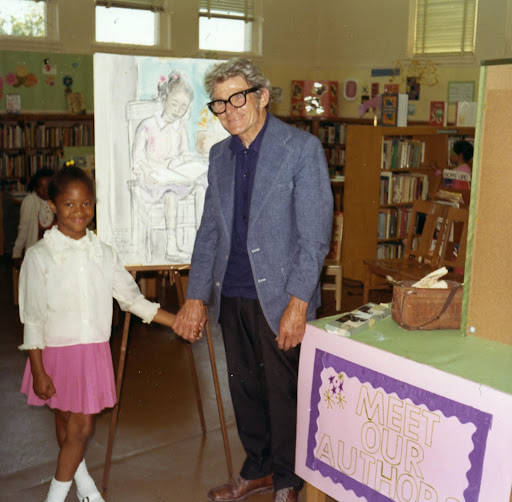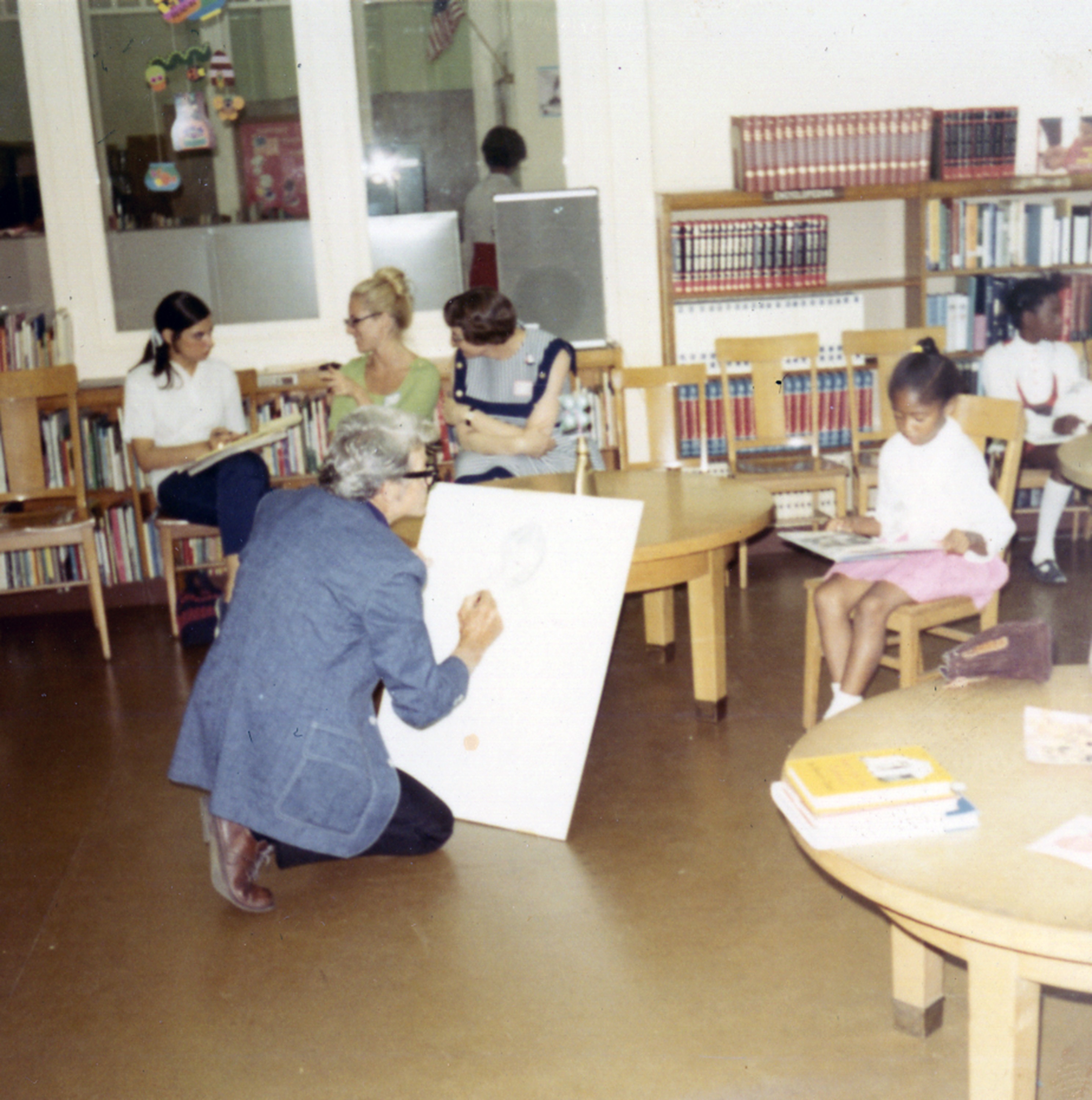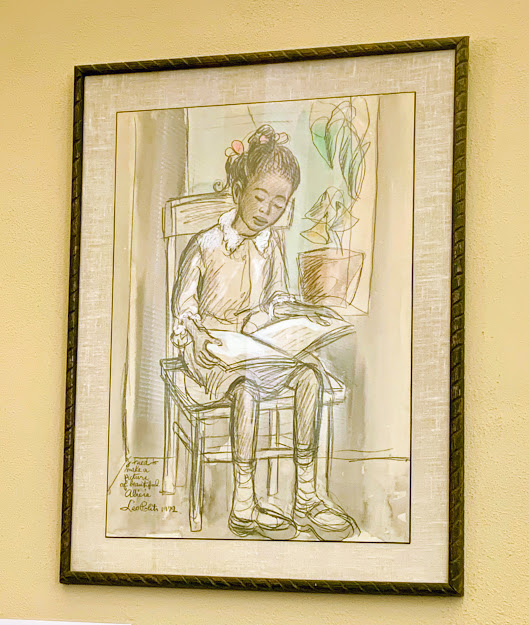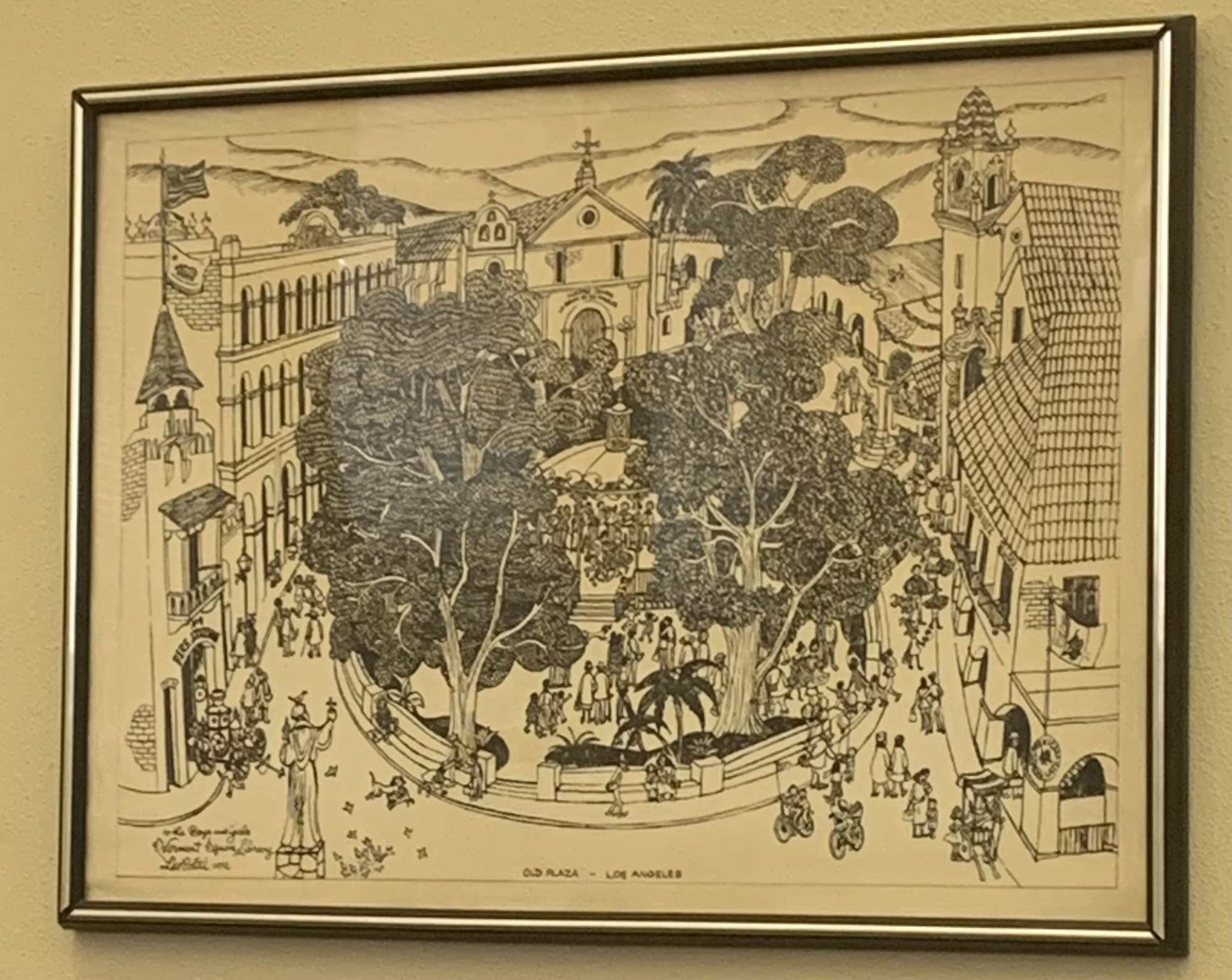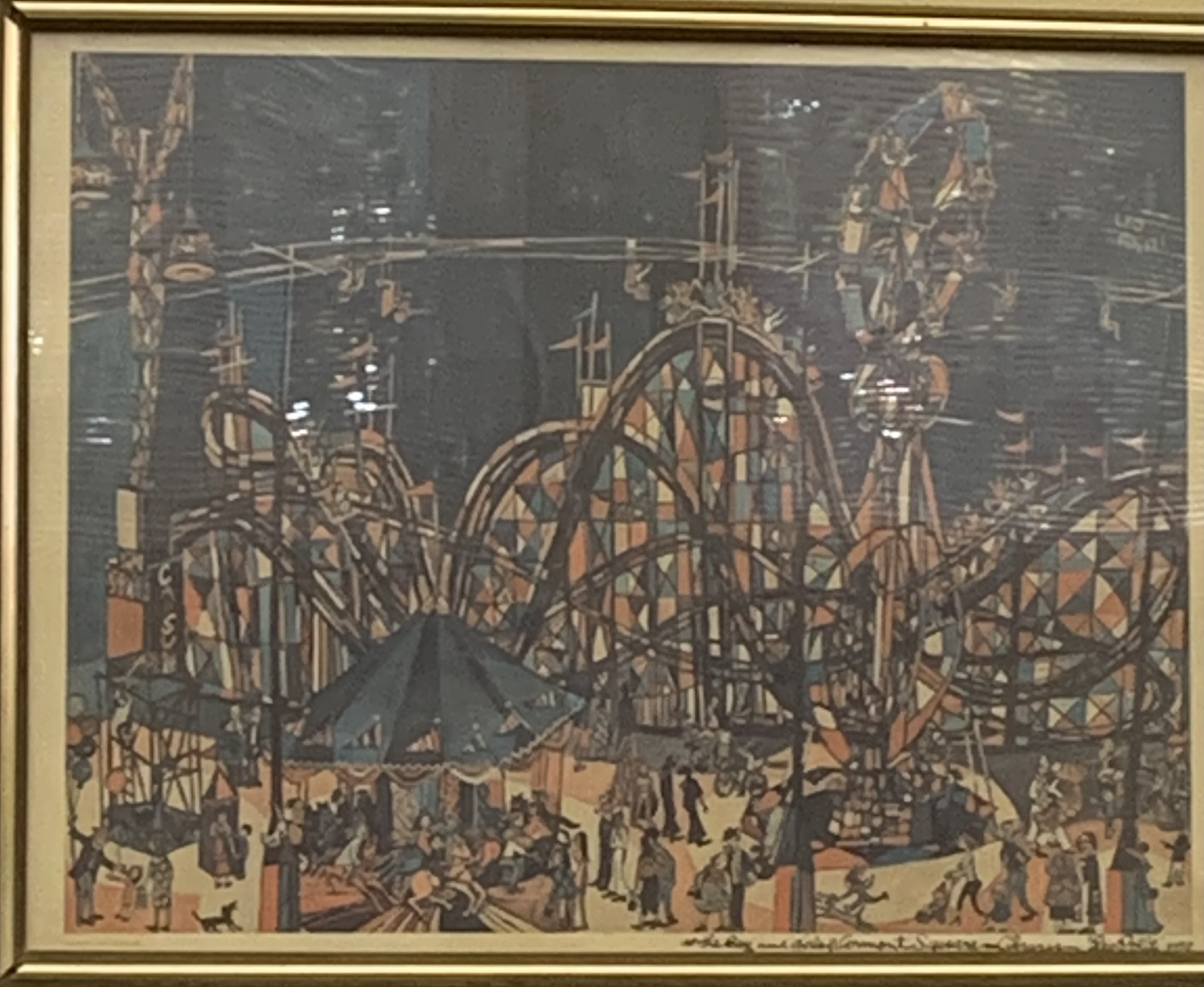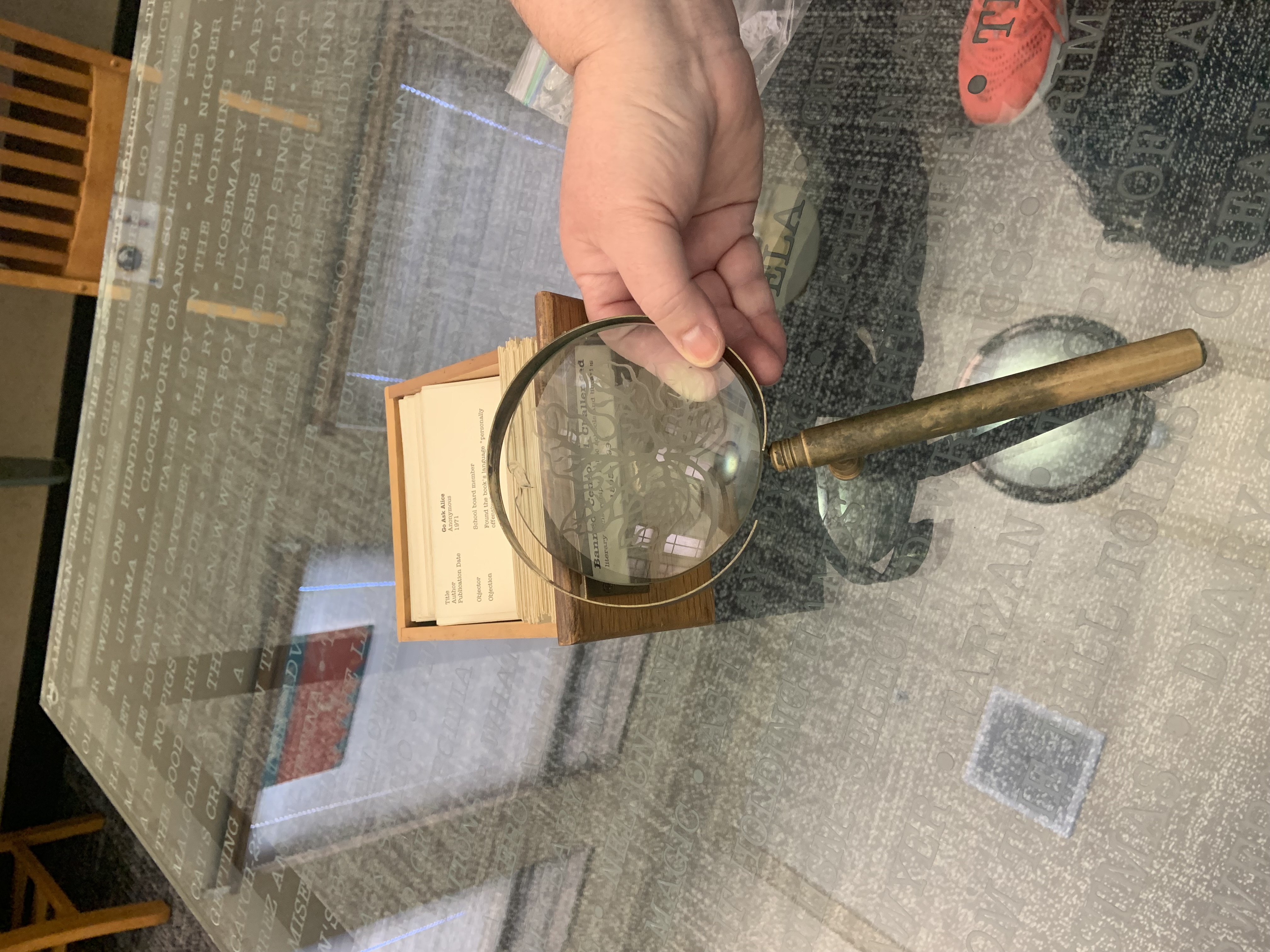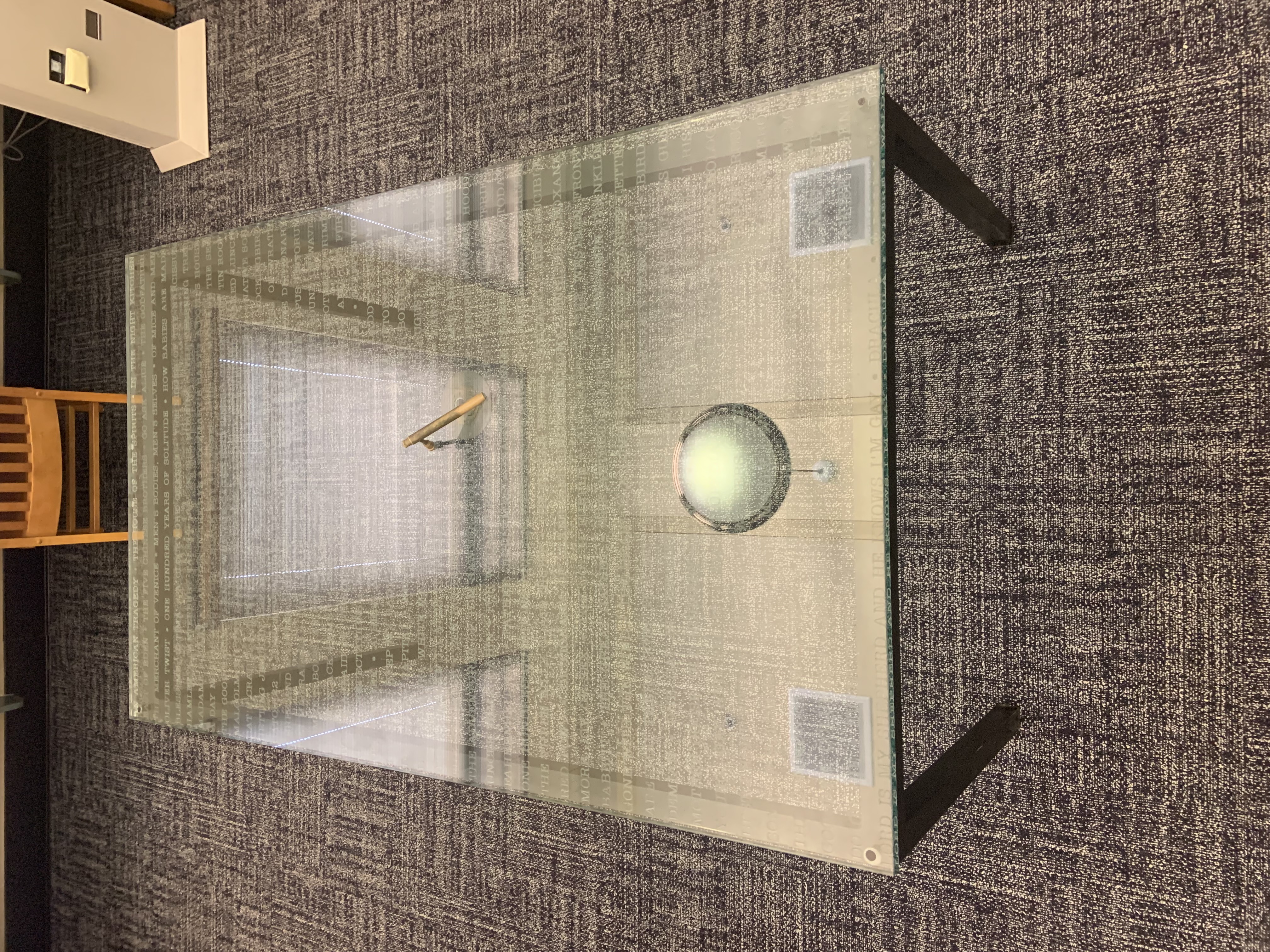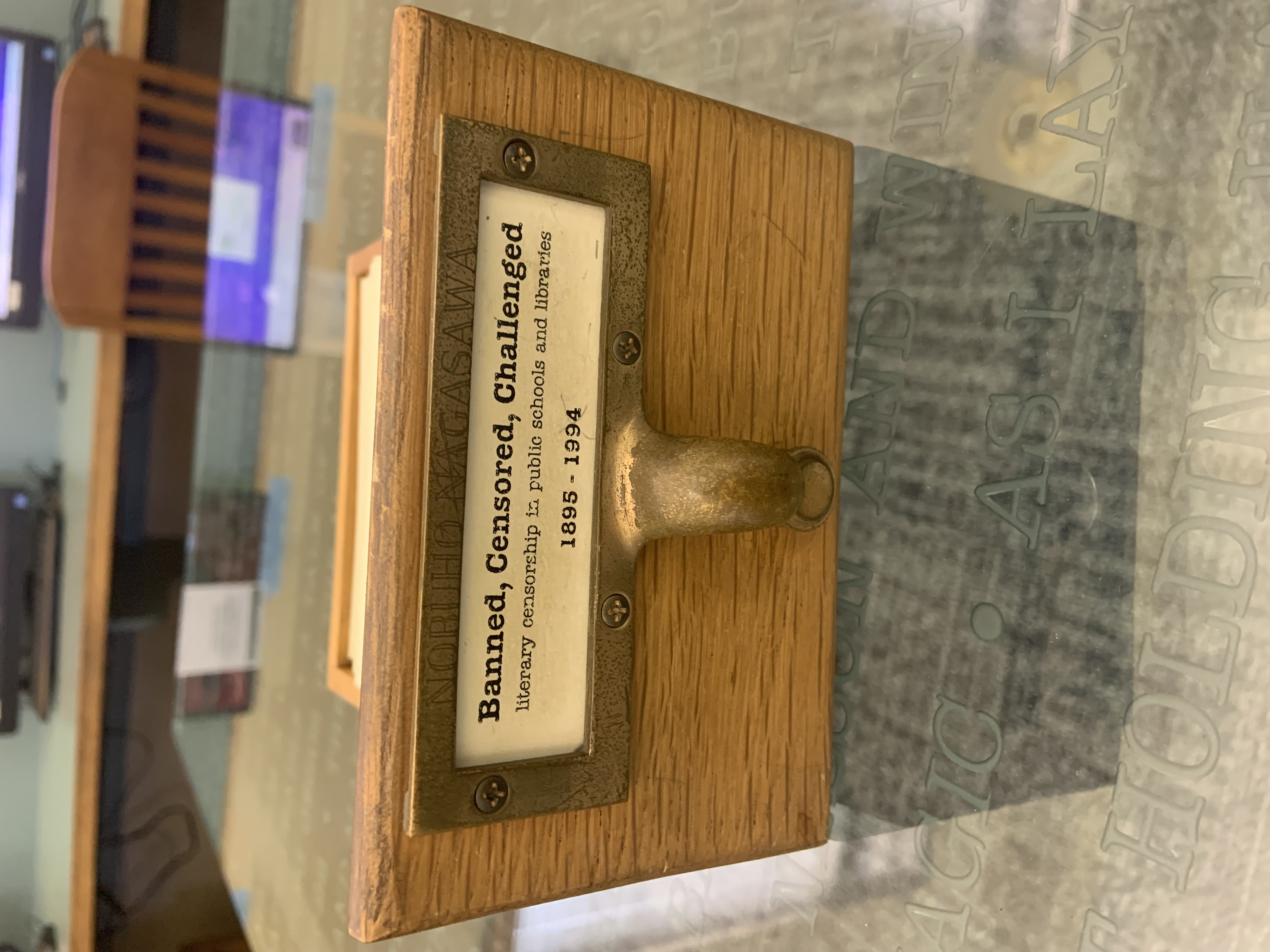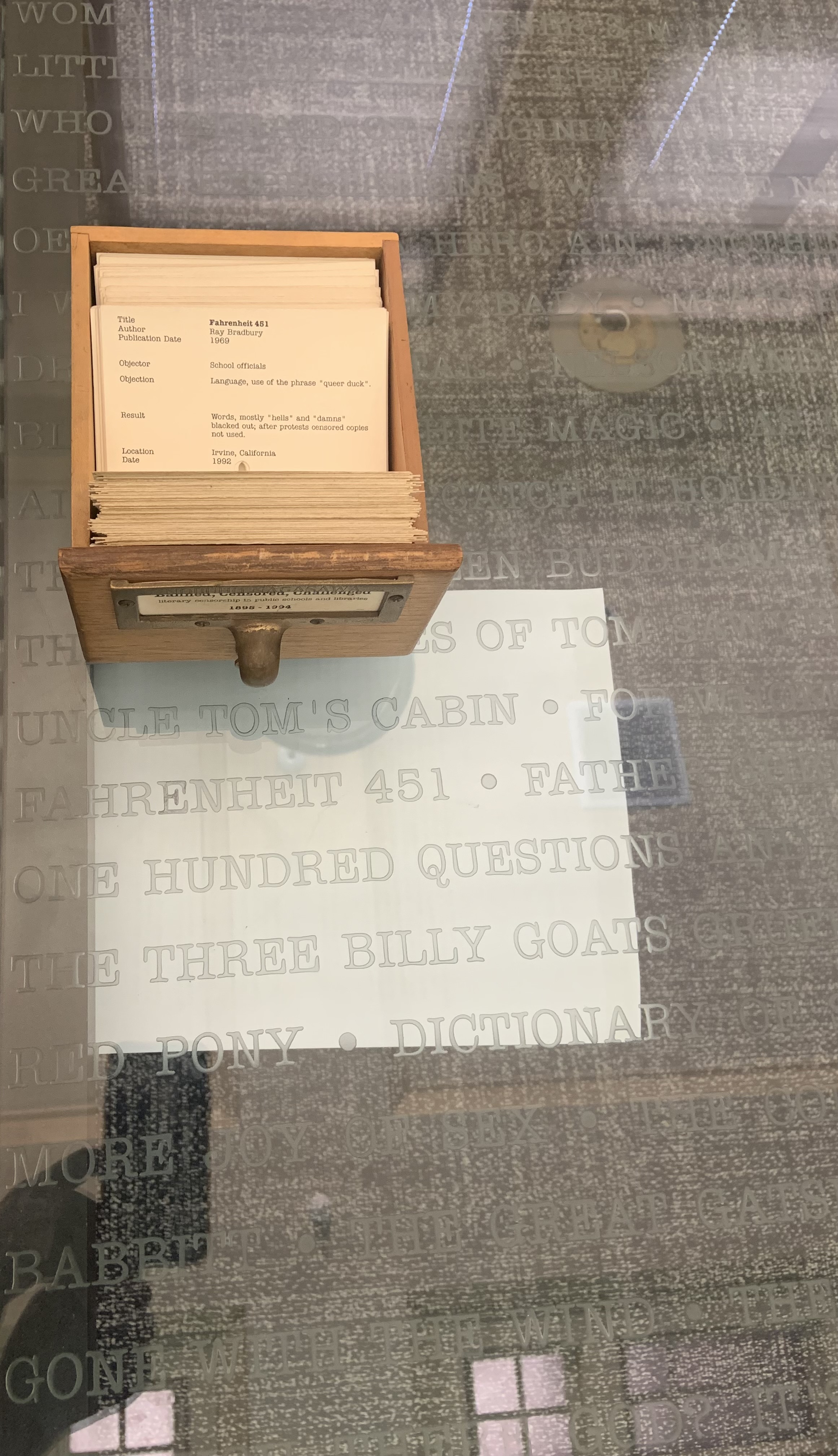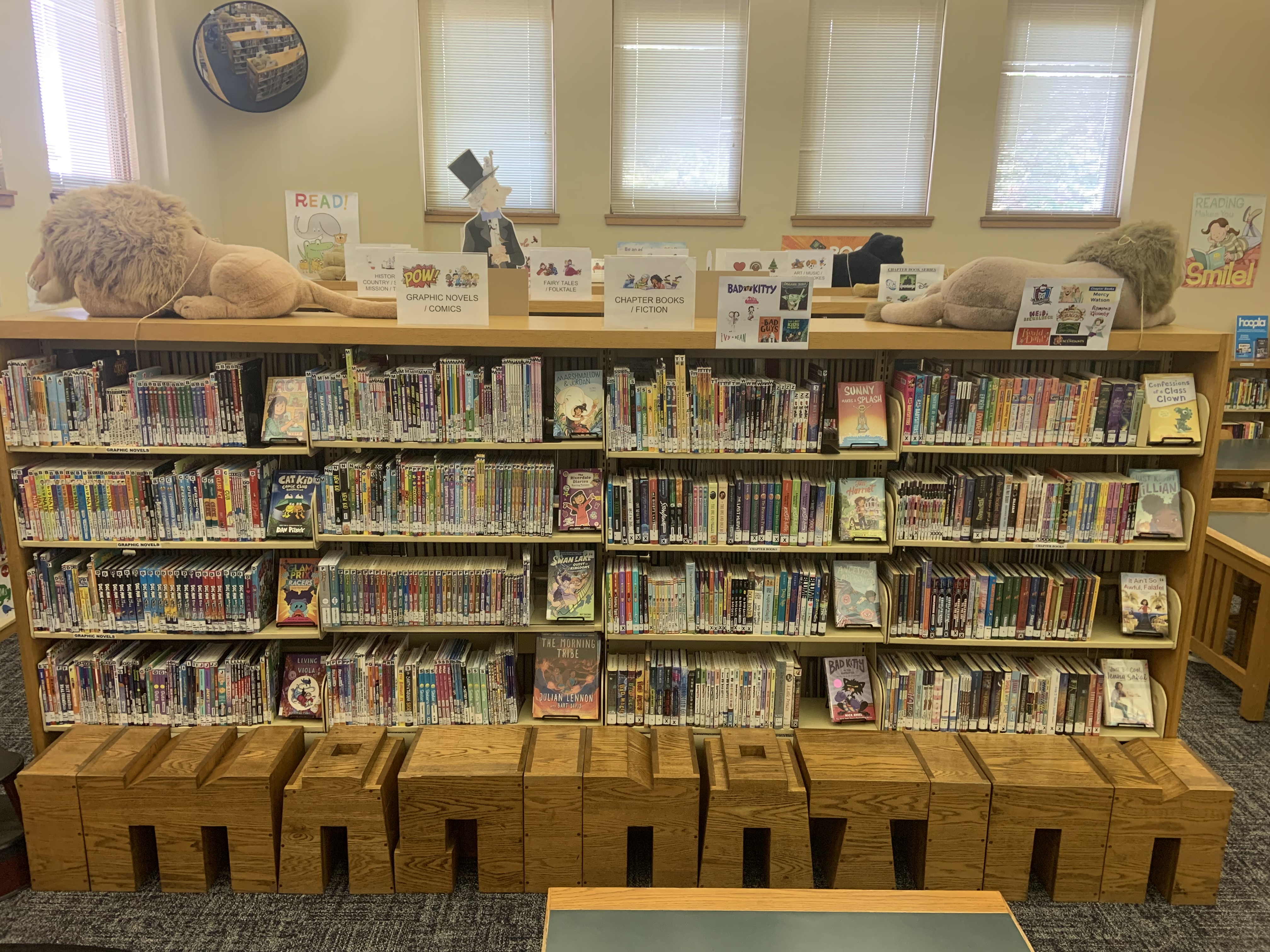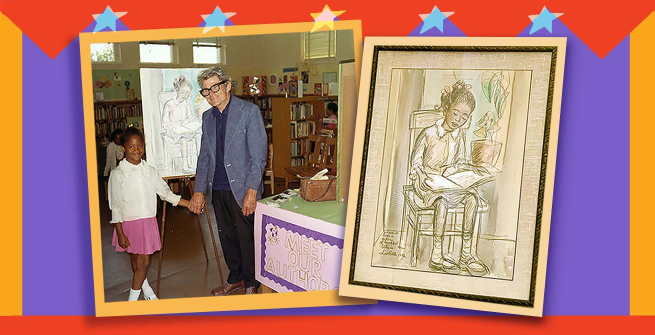The Vermont Square Branch Library is one of three extant Carnegie libraries in the Los Angeles Public Library system. Six Carnegie buildings were erected from 1913-1916 (Vermont Square, Arroyo Seco, Vernon, Boyle Heights [now Benjamin Franklin], Lincoln Heights, and Cahuenga), and three still remain: Vermont Square (1913), Lincoln Heights (1916), and Cahuenga (1916). The Vermont Square Branch Library–its brick and terracotta exterior in the Italian Renaissance architectural style sitting regally in a park in the middle of a residential neighborhood–is home to an original Leo Politi drawing, two signed Politi prints, and two functional library furniture projects–preschool stools and a glass reference table–by Nobuho Nagasawa.
Leo had always impressed upon his children the importance of libraries. He was in awe of the work that librarians did. Once, when standing outside Central Library, he told Paul [his son], “Whatever you want to know in life, you’re going to find it there if you look hard enough.”
–Leo Politi (From Ann Stalcup, Leo Politi: Artist of the Angels, p. 82)
A Caldecott Medal-winning author and illustrator of more than 20 children’s books and pictorial books intended for adults, Leo Politi (1908-1996) was known as the “Artist of Olvera Street” and the “Italian Dr. Seuss.” Politi’s enduring love of children, animals, and Los Angeles is evident in every stroke of his artwork. The Italian-American Politi sketched on Olvera Street, capturing Bunker Hill and the neighborhoods he loved and lived in, such as Angelino Heights, Boyle Heights, and Chinatown. He captured the scenes of Bunker Hill before the neighborhood buildings were razed for redevelopment in the 1960s in his book, Bunker Hill, Los Angeles: Reminiscences of Bygone Days, and paid homage to the turn-of-the-century past in Angeleño Heights (1989). In 1965, the Los Angeles Public Library acquired more than 20 of the paintings included in his Bunker Hill book.
More than anything else I love drawing children. In all my books I try to embody certain universal things–the warmth and happiness of family life; my love for people, animals, birds and flowers; and for the simple warm and earthy things. –Leo Politi (Quote from his 1950 Caldecott Medal acceptance speech; inscribed on a plaque in the Leo Politi Garden of the Henry Madden Library at the Fresno State University.)
Hanging on the wall in the Vermont Square Branch Library’s children’s reading room are three Leo Politi artworks: an original charcoal and pastel drawing and two signed prints. The drawing was actually created by Politi in the branch itself. In 1972, he drew one of the branch’s young patrons, capturing her seated on a chair, serenely reading a book open in her lap. His inscription reads: “I tried to make a picture of beautiful Alicia” / “Leo Politi 1972” and he certainly succeeded in his attempt. It is almost as if you can feel his warm smile, thick white hair curling up, benevolently watching over the room from a perch above the drawing. To learn more about Politi, read Ann Stalcup’s biography, Leo Politi: Artist of the Angels, or check out one of his beautiful children’s books such as: Song of the Swallows, Pedro, the Angel of Olvera Street, Emmet, Moy Moy, and Mr. Fong’s Toy Shop.
The context and concept of the art work emphasize the function of a library as an open social gathering place for reading, learning, discovering and imagination.–Nobuho Nagasawa
Nobuho Nagasawa, an interdisciplinary artist, and professor at Stony Brook University in New York, completed two public arts projects–functional library furniture–for the branch in 1995: preschool stools for children and a reference table with magnifying glass and accompanying library card drawer.
The 11 oak stools–located in the children’s reading area of the branch in front of a row of bookshelves–spell out the word “I-M-A-G-I-N-A-T-I-O-N.” The artist chose this word because it was one of the original subdivisions of the Dewey Decimal System (history, works of the imagination [art], and science). Children can sit upon these stools, reach up, pluck a book off the shelf and read, fueling that imagination, knowledge, and discovery.
The steel-framed glass table, located by the reference desk, is inscribed on the underside of the glass with sandblasted text with titles of books banned, challenged, or censored in public schools and libraries in the United States from 1895-1994. In the middle of the table is a magnifying glass with a sandblasted fig leaf symbolizing “knowledge ‘concealed’—Adam and Eve wore aprons of fig leaves after they became enlightened” (Nobuho Nagasawa). An oak library card catalog drawer serves as a reference guide to the banned and censored titles etched into the table. It is a powerful statement, the juxtaposition of the titles of so many books and the attempts to censor them in the midst of a library, a place that provides access to information for all who seek it. The table reflects all that it sees and–much like the “disappearing” fore-edge paintings commonly practiced as book decoration in the 16th century on–the viewer can look at it from different perspectives to reveal the words, the titles emerging like magic.
These works of the imagination by Politi and Nagasawa celebrate in divergent but complementary ways the immersive and transcendent power of the written word, of art, and of the library. No need to look further for the embodiment of the library’s mission: “The Los Angeles Public Library provides free and easy access to information, ideas, books, and technology that enrich, educate and empower every individual in our city's diverse communities.”
